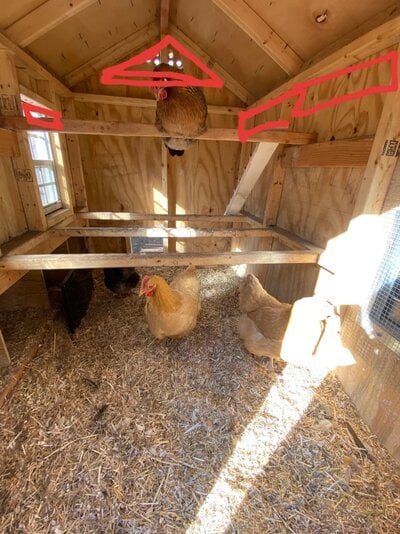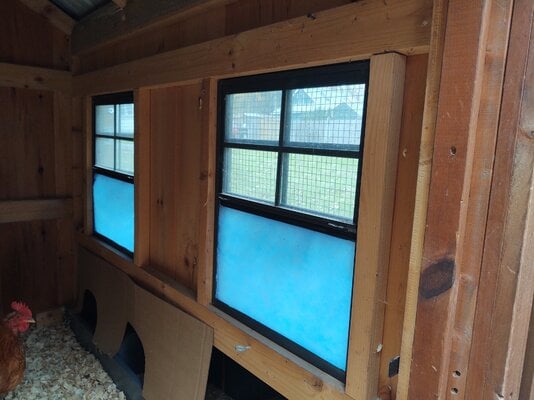Dhkoenig
Songster
Hi All. I just read the winterizing article that came on today and it says the same thing that I know to be true from so many other sources, that you need 1 square foot of ventilation per chicken. I have a coop that is designed to hold up to 12 chickens ( built from plans) and I have seven. The dimensions of the coop are 5 feet wide, 6 feet deep and 6 foot 11 tall. I will attach a photo. It has two windows and those are just lower than the high perch and right in line with the other three perches. So opening those would cause them to have a breeze/draft since they are not higher than the chickens. Here is my question. I do not think I have an unusually small coop but if I had 7 square feet of ventilation, that would barely leave any coop! Plus if I had to put all of those above where they perch I literally would pretty much have to either build my coop 12 feet high (impossible where I live) or basically just cut the roof off! LOL. Can someone explain to me how I am supposed to put 7 square feet of ventilation into my 5x6 coop? Even if I only had four chickens I still wouldn't have enough coop to have 4 square feet of ventilation. Am I the only person who has 7 chickens sleeping in a coop this size? Why do all the coops this size say that they fit up to 12 chickens comfortable? Do all of you that have 7 chickens have a coop big enough for 7 square feet of ventilation over their heads? Help!







